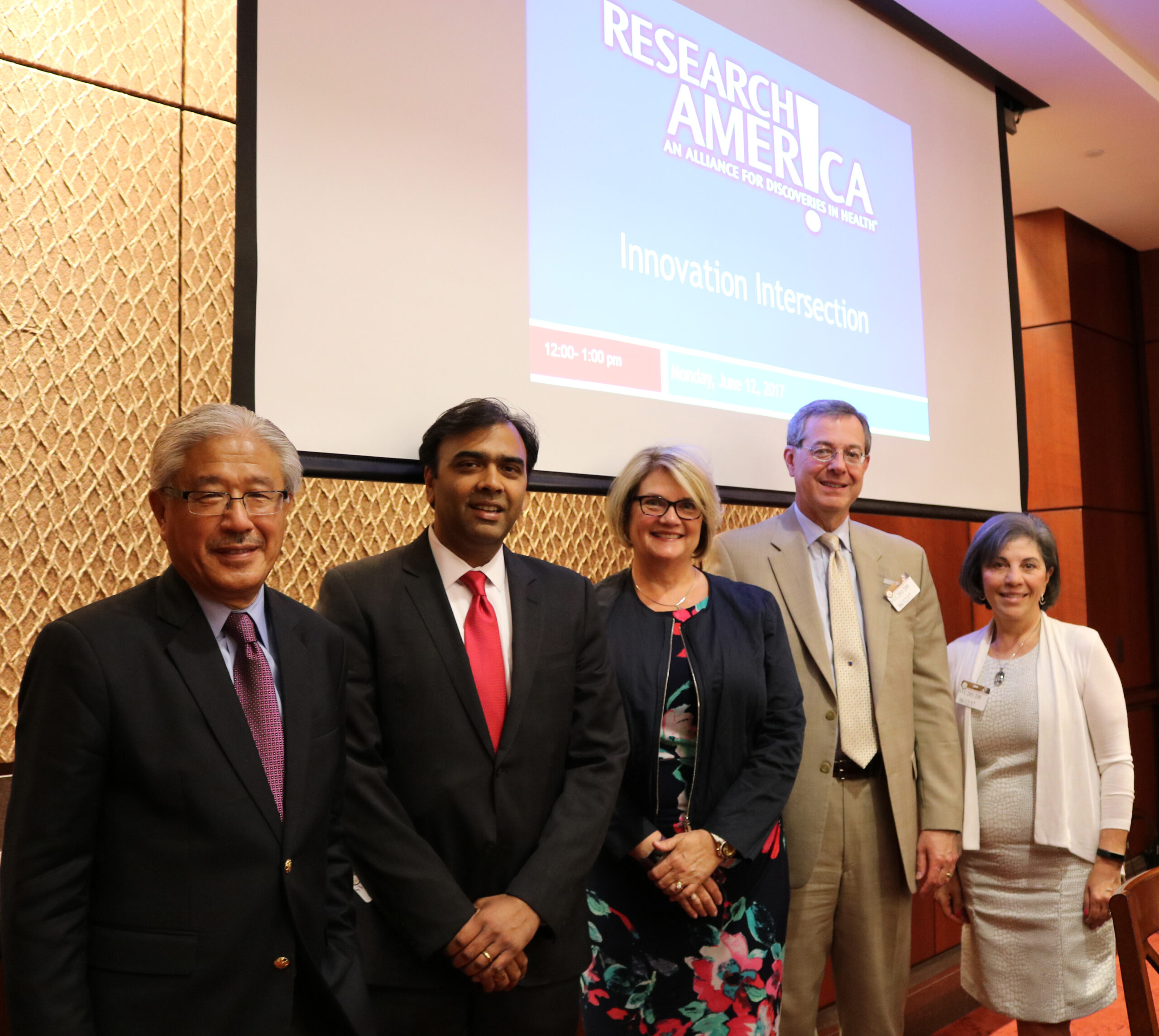Exploring the Who, What, Why and How of Clinical Research
 “Clinical trial design, cost, regulatory burden and recruitment are some of the challenges associated with clinical research,” said Victor J. Dzau, M.D., president, National Academy of Medicine and Research!America board member. Dzau joined other experts in basic science, clinical and translational research and patient advocacy to explore developments in clinical research during a Research!America Capitol Hill Briefing titled “Innovation Intersection” on June 12, 2017.
“Clinical trial design, cost, regulatory burden and recruitment are some of the challenges associated with clinical research,” said Victor J. Dzau, M.D., president, National Academy of Medicine and Research!America board member. Dzau joined other experts in basic science, clinical and translational research and patient advocacy to explore developments in clinical research during a Research!America Capitol Hill Briefing titled “Innovation Intersection” on June 12, 2017.
“We must look at ways to leverage technology and utilize data sharing to make [clinical research] more efficient,” Dzau said. “And, of course, it’s important to shift towards looking at segments of the population, instead of the entire population, and then looking at alternative diagnostic methods.”
Patty Fritz, M.S., vice president of U.S. Corporate Affairs, UCB Inc., echoed Dzau’s statements about the importance of precision research.
“There’s no such thing as an average patient,” Fritz noted. “We need to solve for [each patient’s] unique challenges in order to provide targeted, personalized solutions.”
John Hubbard, Ph.D., FCP, chairman, Association of Clinical Research Organizations (ACRO), president and CEO, Bioclinica, discussed the important role clinical research organizations (CROs) play in the development and commercialization of new drugs, noting that they contribute to about 50% of the total development effort worldwide.
Hubbard did note, however, that high costs associated with the clinical trial process must be addressed.
“It’s about $2.5 billion to bring a drug to market. This includes direct costs, indirect costs and product failures,” he said. “We need to begin moving the needle across all those areas to bring the cost down or [a] generation of new drugs is at risk.”
Sudip S. Parikh, Ph.D., senior vice president and managing director, DIA Americas, and Research!America board member, highlighted the cultural and technological changes that are improving clinical research.
“Many clinical trials from 30 years ago had very few minorities and very few women, and this has changed drastically over the past generation,” Parikh said. “Now [diversity] is not only acknowledged, it’s incorporated into how clinical trials are run.”
New technologies and methodologies are going to challenge the paradigm for how we improve the drug development process, and regulation has to innovate and keep pace with technology, Parikh added. “This requires the backing of Congress and requires federal funding, as well.”
Patients want to be an integral part of the clinical research process from the very beginning, said Eleanor M. Perfetto, Ph.D., M.S., senior vice president of strategic initiatives, National Health Council, and moderator of the panel. “They want to help shape the destination rather than having others do that for them.”
Click here to view photos from the event.




